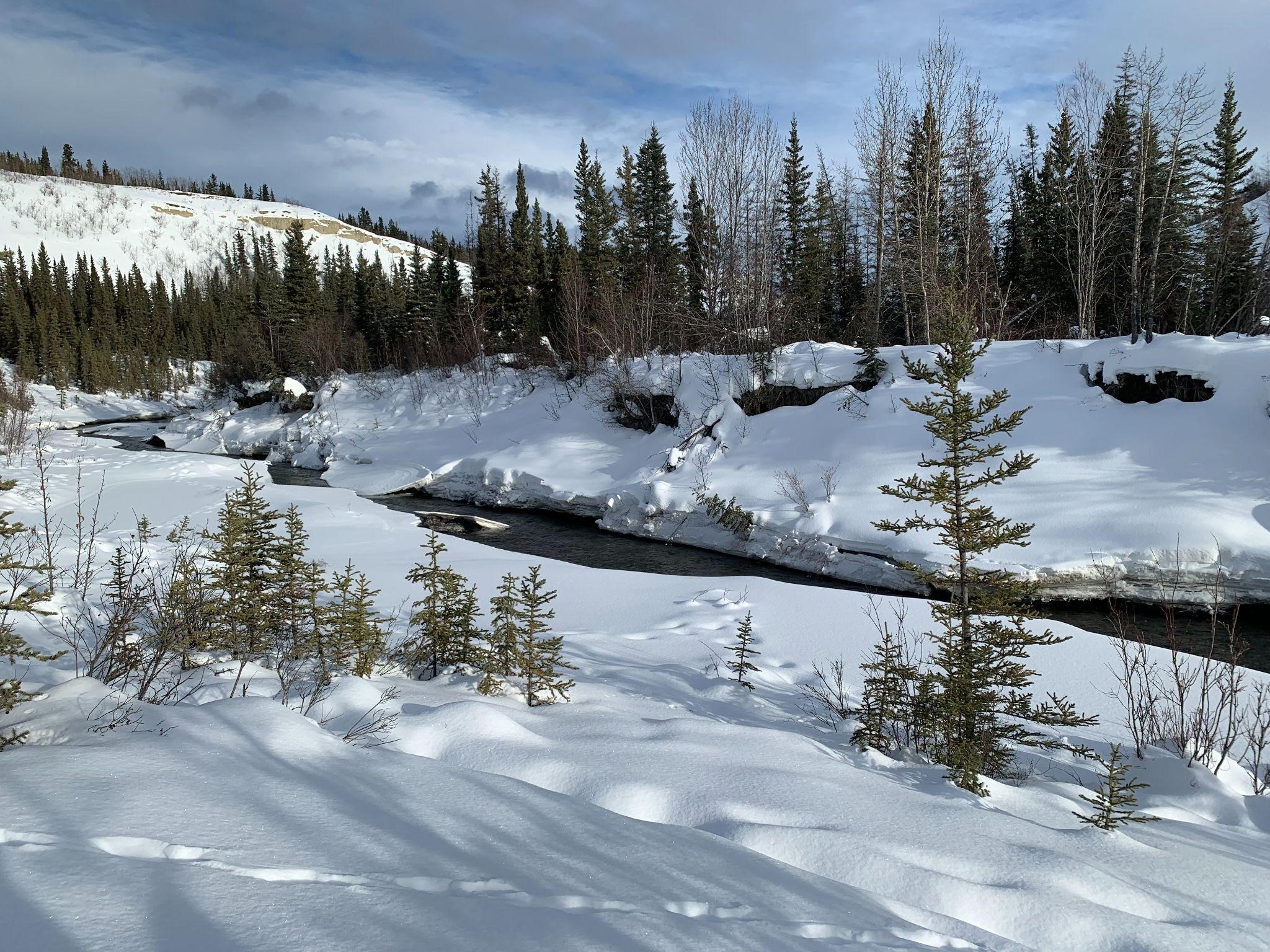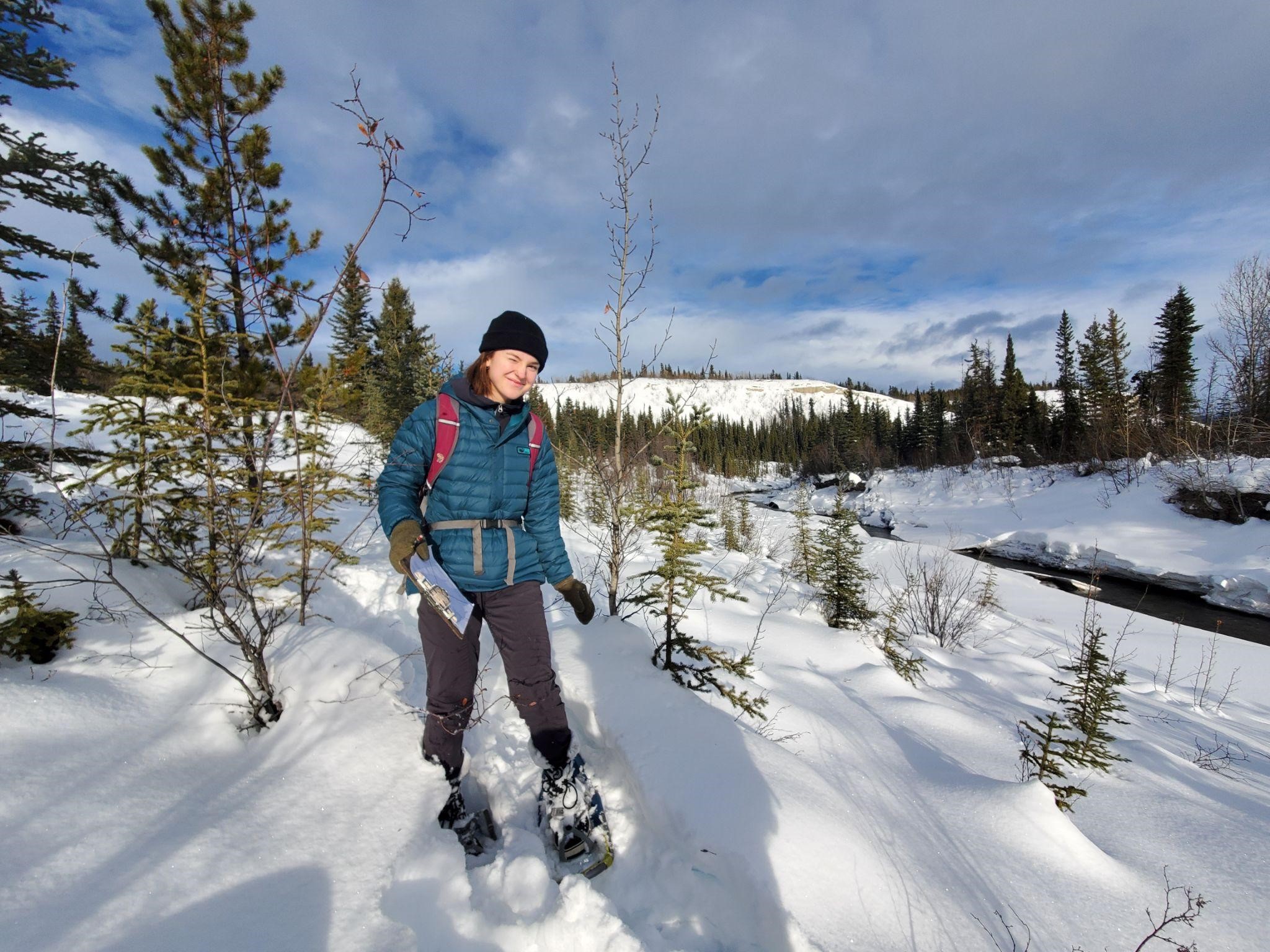Corridor Conservation: My story as a youth inspired by McIntyre Creek
Written by Amelia Ford, McIntyre Creek Project Volunteer
As a grade 12 student at F.H. Collins Secondary School, I was given a project to complete within the final months of high school that explored a hobby, interest, or possible future career path. Essentially, the project could be anything under the sun, as long as it showed my focus and enthusiasm. Initially I was overwhelmed, as there was a huge variety of possible interests I could explore, but I ultimately settled with volunteering for an organization of my choice, CPAWS Yukon. Given my strong interest in the environment and conservation, working with such an organization was a pretty big deal. From December to March I joined Maegan Elliott, the lead behind the McIntyre Creek/Chasàn Chùa project, and helped both in the field and from my computer.

Originally, I was not very aware of the importance of McIntyre Creek or the significant threat it faces with our growing population. The City of Whitehorse has proposed developmental options to meet the needs of a growing city, including the expansion of Porter Creek, which would cut into the heart of the McIntyre Creek area. On top of that, the future expansion of the Alaska highway and increased traffic levels also pose a danger to wildlife in the area.
Though the expansion of development in these areas may be convenient in solving the problem of housing, the resources and home of many species living at McIntyre Creek would be in trouble. The Yukon is known for its vast lands and diversity of plants, animals, and ecosystems. McIntyre Creek subsequently plays an important role in connecting our wildlife to these different lands, which is what CPAWS and other organizations are trying to show through snow track surveys, collecting data, discussions, and advocacy.
I completed a snow track survey in McIntyre Creek, and even within a small section of the area Maegan and I counted the tracks of many unique and different species. The survey involved traversing a 1.5 km long triangle, identifying and recording all of the tracks that cross the transect route, which in my case involved trudging through knee-deep snow and an unexpected spring crossing. I was shocked by the range of species that pass through or live in the wildlife corridor (it’s not just squirrels and the occasional bear). On just one transect we counted the tracks of lynx, deer, martens, hares, you name it! I further realized the variety of species when I entered data from multiple different surveys across McIntyre Creek into the main spreadsheet, which is full of a diverse range of animals. There’s evidently a large volume of wildlife that uses the corridor – however, it is also used by humans just as frequently.

This area plays a role in the mental well-being of our communities, especially during the onset of the COVID-19 pandemic. With a decrease in indoor gatherings, many took to the outdoors to find solace from the stress caused by the virus. Whether it be skiing, hiking, snowshoeing or walking, the McIntyre Creek area has visible evidence of use by our city’s population. And not just for recreational purposes – this area is also frequented by Yukon schools for educational purposes and for learning about our territory’s biodiversity.
From initially knowing next to nothing about this issue, I am super grateful to have been given the opportunity to work with CPAWS and learn about the significance of the land I use every day. Working on this project also showed me just how important actively making a difference can be. It’s easy to become overwhelmed with the constant onslaught of environmental threats our world faces, paired with the devastating impacts of our changing climate, but it is also important to remember the power and change we can create by advocating for these issues (especially as youth). For this reason, I encourage you to research and speak up about these types of issues, and to communicate with others and your community so we can conserve this land we are so fortunate to call our backyard.
